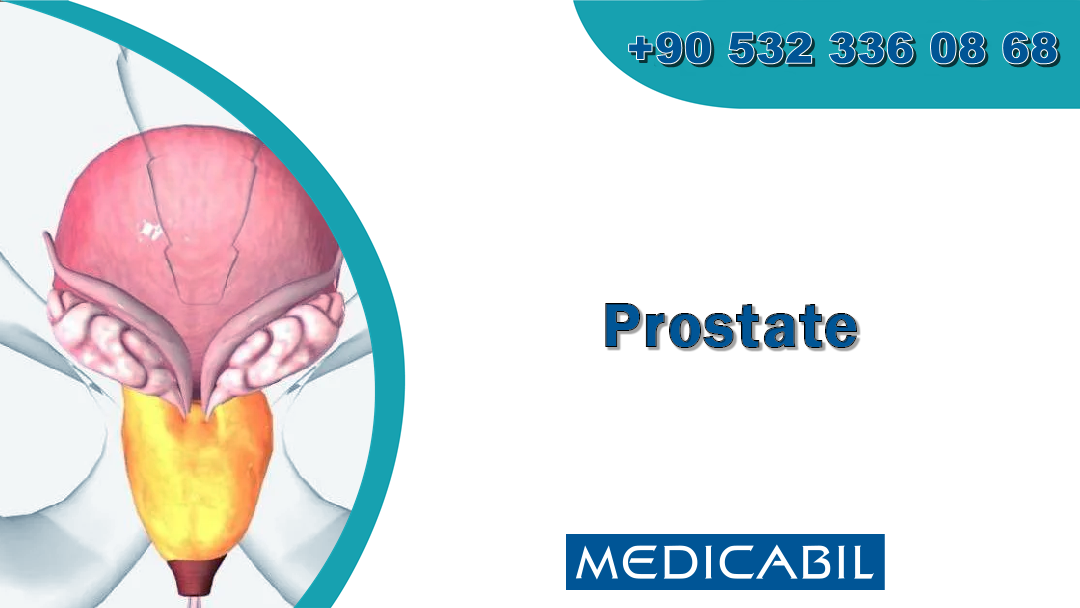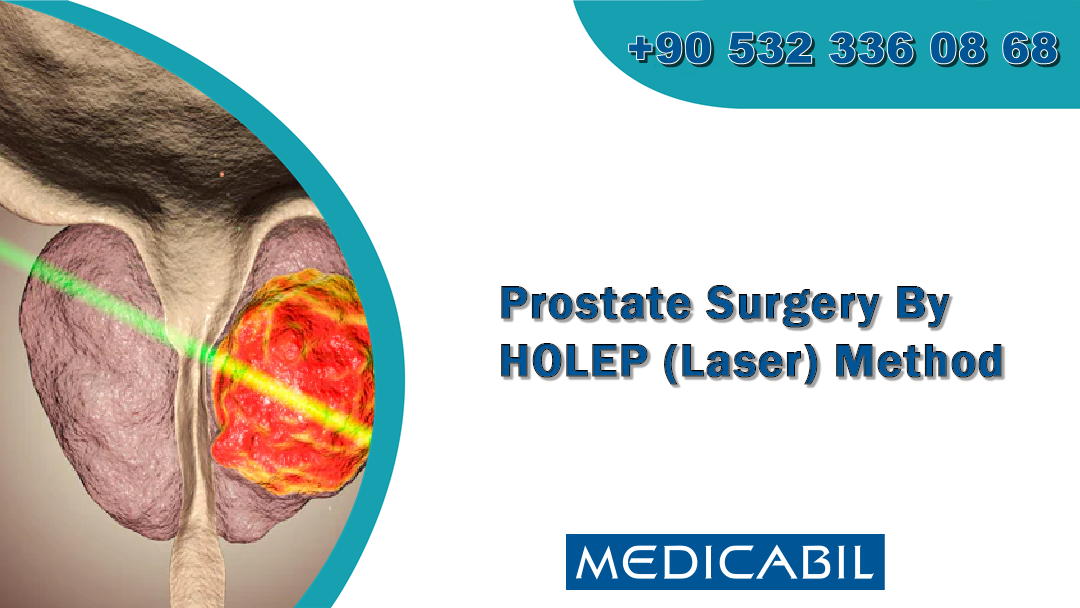Urology
- Home
- Urology
The Urology Department of Medicabil Hospital provides examination, examination and treatment services to adult and child patients using the most up-to-date methods. Urology clinic, both men and women at any age gender group in the kidneys, ureters (between the kidneys and the urinary bladder in the urine), urinary bladder, urethra (where urine from the bladder to the outside of the body is moved from the channel), prostate – penis (in males) of dealing with the disease is an important medical clinic. However, the diagnosis and surgical treatment of male reproductive and sexual diseases are also carried out by the Department of Urology. These diseases, which are diagnosed by our doctors specializing in their field in the Urology Department, are successfully treated with the most appropriate surgical methods. The Department of Urology has sub-branches of andrology, functional urology, endourology, urooncology and pediatric urology.
In our hospital, the diagnostic and treatment methods of all urological sub-branches are applied within the framework of the most up-to-date approaches. As in many branches, surgical interventions in the field of urology are now almost all performed by closed surgery (laparoscopy, endoscopy).
Urology has become the most widely used branch of closed surgery. In our hospitals, we have highly experienced specialist doctors who deal with all sub-branches of urology. Some of the urological procedures performed in our hospitals are listed below;
KIDNEY AND URINARY TRACT STONES (URS, RIRS, PNL)
All endoscopic methods used to treat kidney and urinary canal stones are used in our hospitals.
Ureterorenoscopy (URS):
It is the preferred method for stones located in the canal (ureter) between the kidney and dec bladder. With semi-rigid camera devices that are about 3 mm thick and 60 cm long, they are entered into the bladder and from there into the channel where the stone is located by entering it through the channel (urethra) where the patient urinates. With stone crushers advanced from the inside of the URS device (laser or pneumatic), the stone crumbles into small pieces. It is expected that the patient will drop these crumbling stones by himself. Sometimes a catheter (wire, stent) is inserted into the canal through which the stone is broken at the end of the operation. This catheter is removed after about 1 month.
Flexible ureterorenoscopy (f-URS) (RIRS):
In this method, the bendable ones of the URS device are used. It is often used to treat kidney stones and stones that have just fallen from the kidney into the canal.
Percutaneous nephrolithotomy (PNL):
It is the most commonly used method for closed surgery of kidney stones. It is done by creating a tunnel about 1cm (10mm) wide from the patient's back area to the inside of the kidney. With the help of camera tools sent through this tunnel, stones inside the kidney are seen and the stones are removed as a whole or broken out of the same path. Unlike the URS method, stones are removed during surgery in this method. Recently, closed kidney stone surgery (PNL) has also become possible through even smaller tunnels thanks to technological advances.
CHILDREN'S KIDNEY STONE SURGERY (ULTRAMINI PNL)
A standard PNL operation in adults is performed through a 1cm wide tunnel, while an ultra-mini PNL operation performed in children can be performed through a 0.4 cm wide tunnel. As the tunnel diameter decreases, the likelihood of some undesirable conditions such as bleeding due to surgery decreases very much. In addition, the recovery process after surgery takes a very short time. We prefer the method we call ultra-mini PNL, especially in children under the age of 14.
KIDNEY CANCER
Treatment of kidney tumors varies depending on the stage of the tumor and the age of the patient, the general state of health of the patient and the anatomical structure of the patient. The standard treatment of kidney tumors is to remove the fatty tissue around the kidney with a “Radical Nephrectomy” operation. Especially if the location of the mass is suitable for masses less than 4 cm, it is possible to save the rest of the kidney by removing only the tumor area from the kidney with a “Partial Nephrectomy” operation. Both methods of surgery can be performed by the open method or by the laparoscopic (closed) method.
Laparoscopic surgery is the first preferred method in the whole world because it provides faster recovery compared to open surgery. Laparoscopic Radical Nephrectomy and Laparoscopic Partial Nephrectomy operations are performed in our hospitals.
THE URINARY BLADDER (BLADDER CANCER) :
Most often it causes complaints in the form of painless clotted bleeding in the urine. Less often there may also be complaints in the form of straining and burning when urinating. In particular, individuals who smoke, individuals working in the paint industry are at high risk and are more common in men than women. It is necessary to evaluate the bladder endoscopically with a camera. At the same time, pathological evaluation of tissues is provided by TUR-MT (transurethral resection of the bladder) operation by taking samples from suspicious-looking areas or tumoral formations. The main follow-up and treatment depends on the outcome of this pathology. Depending on the outcome of the pathology, drug applications to the bladder, radical cystectomy (removal of the entire bladder) or chemotherapy-radiotherapy treatments are planned jointly with my doctors in medical oncology and radiation oncology.
PROSTATE SURGERY
All diagnostic tests for prostate diseases that often begin to occur after the age of 50 in men (PSA, uroflowmetry, etc.s.) are carried out in our hospitals. A prostate biopsy is performed under anesthesia for patients with suspected tumors. We perform TOUR – Prostatectomy (scraping of the prostate by entering it through the urinary canal) surgery for patients whose tumors have not been detected or suspected. In our patients with cancer, Laparoscopic or Open Radical Prostatectomy operations are performed according to the patient's clinical condition.
Prostate Surgery using the Holep (Laser) Method
Holep has become increasingly common in America and Europe in recent years and has managed to become the “Gold Standard” in prostate enlargement surgery due to its advantages. Holmium laser, which is used in the 'Prostate Enlargement Treatment' process using the Holep Method, can be applied in a limited number of centers in our country because it requires a high technological infrastructure.
How Is Prostate Enlargement Surgery Performed with Holep?
Prostate enlargement surgery with Holep is an operation in which spinal (numbing below the waist) anesthesia is sufficient. In a classic closed surgery, the prostate is removed by cutting it piece by piece; In the Holep method, the prostate tissue is removed by peeling it from the location (ENUCLEATION); the least amount of prostate tissue that can be left is ensured.
What Are the Advantages of the Holep Method?
• In those who have a prostate large enough to require open surgery, closed surgery is also possible with this method.
• Less bleeding occurs compared to classic closed prostate surgery.
• Faster recovery and return to normal life are provided.
• Prostate enlargement after surgery is much less likely to recur.
• Unlike laser surgeries such as Greenlight, tissue can be taken for the diagnosis of pathology.
• The decrease in PSA blood value after surgery is much greater.
• It is safer than other methods in patients using blood thinners.
SEXUAL PROBLEMS AND INFERTILITY (INFERTILITY)
In our hospital, examinations, examinations and treatments are carried out for erectile dysfunction called erectile dysfunction in men and infertility conditions related to men that are classified as male infertility. High success rates are achieved with the micro-surgical method we use to treat varicocele disease, which is an important cause of male infertility.
Sexual dysfunction in men; in current medical treatments; penis shock wave therapy (ESWT) in patients with penile prothesis surgery and without improvement, despite all the treatments are performed in our hospitals.
PROBLEMS AND TREATMENT OF URINARY INCONTINENCE (INCONTINENCE)
It is an uncontrolled urinary incontinence (incontinence) condition that aggravates the daily living conditions of our patients. Almost half of women have urinary incontinence problems at a certain time in their lives. The problem in question is a condition that can be treated no matter what age, has a solution. With the recently developed drug treatment protocols, serious distances have been taken in the non-surgical treatment of these patients. In necessary cases, procedures such as urodynamic examination, pressure-current study, botox application to the bladder are also performed. Bladder and urinary canal(urethra) sling surgery is also performed in our hospital.




